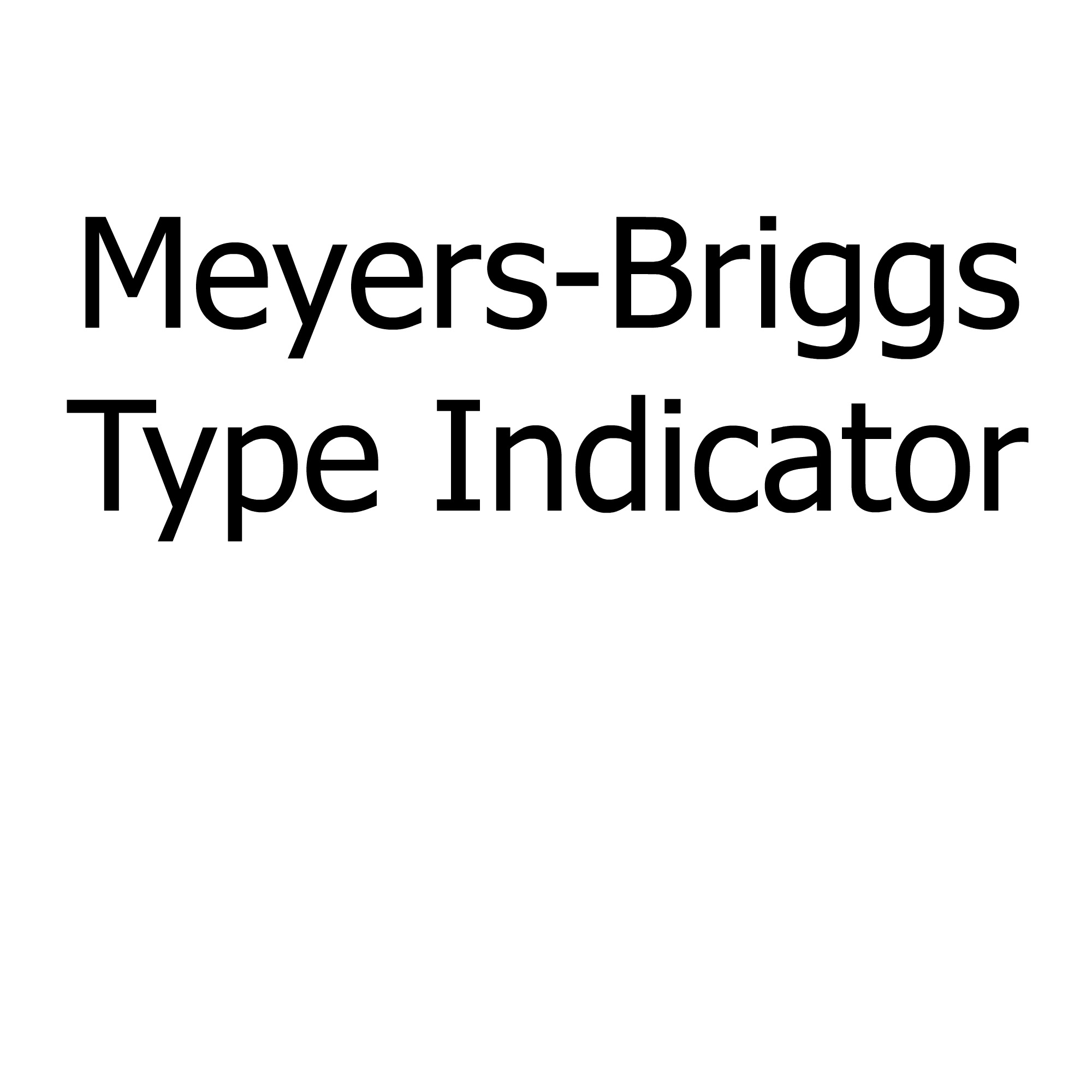Introduction to MBTI
The Meyers-Briggs Type Indicator (MBTI) is a psychological theory which states that every person falls under one of sixteen archetypes. These archetypes are how that particular person perceives information and makes decisions.
In 1920, a Swiss physician named Carl Jung developed a theory that every person has a distinct archetype that defines how they perceive the world and make decisions. Later, in 1962, Isabel Meyers and Kathryn Briggs developed a questionnaire to determine which of the sixteen archetypes one falls under. “The underlying assumption of the MBTI is that we all have specific preferences in the way we construe our experiences, and these preferences underlie our interests, needs, values, and motivation.”
The sixteen archetypes are divided into four groups that designate a stereotypical calling for that type. The four categories are defined by a range of names, but for this paper I’ll use this set of terms:
Analysts
Guardians
Idealists
Explorers
The letters represented are different in each category. However, those letters are found in each type in their designated categories. The explorers (SP) claim the ESTP, ISTP, ESFP, and ISFP. The guardians (SJ) are ESTJ, ISTJ, ESFJ, and ISFJ. The idealists (NF) are INFJ, ENFJ, ENFP, and INFP. The analysts (NT) are ENTJ, INTJ, ENTP, and INTP. You won’t find the designated letters of one category together in the type of another category.
The basics of the system is to find the preferences of the person based on different ways of perception.
The archetypes are always acronymed into four letters. These letters define the relevant preferences of that person. I or E for introversion and extroversion. N or S for intuition or sensing. T or F for thinking or feeling. J or P for judging or perceiving. Often times there is a fifth letter attached to the end. This will be represented by -A or -T for assertive or turbulent individuals. However, this fifth category is not an additional definition of the archetype, but merely an indication of psychological state.
The first is the mind category, and deals with introversion and extroversion. While many are under the presumption that these two concepts are based heavily on social conduct, this is not entirely true. Introverts see the world in an internal manner, while extroverts see the world in an external manner. Extroversion does not entail social prowess, but the trait is more common in the group. Introversion does not imply that the subject is shy, awkward, or solitary, but simply relies more on their own perception than that of the extrovert. The introvert draws their energy from time alone, while the extrovert draws theirs from social contact. In summary, the way a person recharges is directly linked to this preference. The first letter in the archetype acronyms, I or E, represents either introverted or extroverted.
The energy category refers to sensing or intuitive tendencies. The sensing subjects are generally used to habitual practices and a down-to-earth view on life. They are practical, and see things as they are. The intuitive subjects lean on the curious side of the spectrum. Intuitive people are the dreamers, and are a more fantasy prone bunch. They are novelists, looking for the possibilities in life.
The next category involves the judging preference of the subject. The two groups in which one is sorted is thinking or feeling. What this entails is the tendency to make decisions based on rational judgment or emotional thrust. It is worthy of note, that an extrovert with feeling tendencies may react very differently than the introvert with feeling tendencies. Thinking individuals prefer logical rationalization over emotion. Feeling persons are the opposite, and have a more empathetic role, being less competitive and more willing of cooperation.
The tactic category is determines judging or prospecting. The judging subjects prefer high levels of organization and planning. They prefer a stable structure leading their actions and lives. The prospecting individual likes looking for opportunities. They are spontaneous, and prefer keeping their options open.
Finally we come to the identity category. These two types, assertive and turbulent refer to the state of mind. An assertive personality is firm in their identity. They manage stress well and keep level heads. Their parallel, the turbulent are more likely to second guess themselves or over-think things.
It stands worthy of note that the system is not scientific fact. It is relegated to theory, and has not been tested under modern scientific standards.
While I take a position on the faultiness of the test in basis to the personalities of humans, it does have a standing purpose in the writing community. Using the results of this test in the company of those familiar with it gives others a better idea of who the character is. It is a quick, simple way for your fellow writers to create an image of the character’s personality, as well as give helpful tips while grounding the characters itself.
.jpg)
For more information or to take the test, you can check out these links:
https://www.16personalities.com/
http://www.myersbriggs.org/my-mbti-personality-type/mbti-basics/